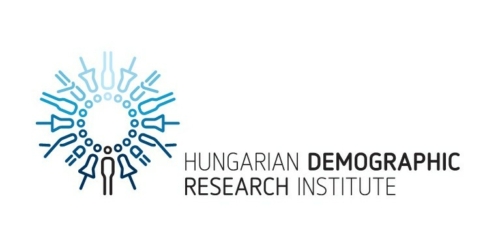Family-Friendly Hungary: A Look at Family Policies, Demographic Changes, and Selective Pronatalism
Hungary aims to present itself as a family-friendly country, but its policies reinforce traditional gender roles, marginalizing those who do not fit the conventional family model.
If you have recently traveled through Budapest’s Liszt Ferenc International Airport, you may have noticed posters and banners promoting ‘Family-Friendly Hungary’ displayed in multiple languages at boarding gates, baggage claim areas, and various other locations throughout the airport. These visuals are not just welcoming gestures but part of a broader governmental communication strategy to emphasize the importance of family policies in Hungary’s social policy agenda.
‘Family-Friendly Hungary’, Budapest Ferenc Liszt International Airport, 2024
Copyright: Orsolya Udvari
Family policy in contemporary Hungary occupies a prominent and central position within the country’s broader social policy framework. The primary goal of these policies is to encourage childbearing, a focus that is often framed as a response to the so-called ‘demographic crisis.’ This ‘crisis,’ characterized and framed mainly by low birth rates, low fertility rates and an ageing population, has led the current government to adopt pronatalist policies since the 2010s that seek to increase the birth rate by providing financial and social support to families with children. As former president of Hungary, Katalin Novák recently said in a lecture at the Brigham Young University “having children saves the world” from the ‘demographic ice age’ we witness in Europe.[1] Unsurprisingly, these family policies exclusively promote a traditional family model.
Addressing Demographic Challenges: The Pronatalist Approach
The emphasis on family policies in Hungary can be seen as a strategic response to demographic concerns. From this perspective, boosting the birth rate is framed as a solution to the ‘demographic catastrophe’ the country aims to avoid. Research focusing on Hungarian family policies from the 2010s often highlights this pronatalist approach, examining the policies’ goals, target groups, and their effectiveness.[2]
Pronatalism, the encouragement of all births, is built on policy or it can be understood as a societal attitude.[3] Pronatalist beliefs and values are often based on the assumption that having children is a fundamental human experience, as well as a means of ensuring the continuity of a nation. Pronatalism emphasizes the social and economic benefits of having children, such as providing workforce or reducing the consequences of ageing societies. The promotion of having children in families with the support of demographic politics, policies and discourse are at the core of pronatalism.[4]
Pronatalist policies are designed to make childbearing and family life more appealing through various incentives such as tax breaks, housing support, and extended parental (mostly maternal) leave and by propagating having children as a patriotic duty. These measures are not just about supporting families but are also tied to a broader national demographic strategy. By creating a supportive environment for families, the government hopes to encourage more couples to have children, thereby addressing long-term population decline. At the same time, it promotes traditional family structures. Hence, having non-traditional families is not encouraged and they are not considered to be ‘worthy’ in the pronatalist agenda.
As we know already from the work of Herbert J. Gans those who are excluded from the majority, the ‘unworthy’ have several functions as their exclusion brings positive effects for the majority.[5] One of the functions is to legitimate and find links to the existing social order and class hierarchies. Social norms are defined in relation to the ‘deviants,’ the excluded part of a society. This has a highly moralized tone because it considers the ‘unworthy’ inherently unable to change. That also serves as a justification for not providing proper social care, improvement in social institutions and infrastructure. Furthermore, it also justifies whom to support and whom not to support.
Consequences of Selective Pronatalism
In a pronatalist agenda this division and hierarchy between and within the ‘worthy’ and ‘unworthy’ leads to a selective or aggressive pronatalist approach.[6] This means that all births are encouraged only within specific groups of people. In most cases the desired and targeted group by the pronatalist agenda is middle-class, employed, white, heterosexual, married couples (as pictured at the airport). For those who fit the category several subsidies, tax incentives or financial support are available from the state. Furthermore, “pronatalist policies are expressed via incentives and political propaganda” as well.[7] For homosexuals, singles, unmarried couples, people from lower classes, unemployed, minority ethnic groups or immigrants accessing resources offered by the pronatalist regime is often extremely challenging or even impossible. By turning this type of thinking into policy making, demographic growth is wished to be made only by the growth of specific parts of society. The ‘unworthy’ of society are looked upon in and displaced from the discourse. This affects not only the fabric of society – creating the division between the ‘worthy’ and ‘unworthy’ – but the core idea and definition of the family. The “pronatalist practices usually have the consequence of reinforcing the traditional family models”[8] which means a heterosexual couple with widely accepted classic gender roles where the man is the ‘breadwinner,’ an active participant of the public sphere, whilst the woman as the ‘caretaker’ is responsible for managing the private life, for nurturing children and reproductive work. Furthermore, the pronatalist agenda targets women in a more aggressive way as they are considered to be responsible for most of the biological and social reproduction.
Selective pronatalism thus refers to the idea that promotes and encourages reproduction among certain groups of people, while discouraging and even excluding others. This happens through policies and practices that are based on social, economic, or political interests, such as maintaining population growth, or promoting national or ethnic identity. It can take many forms, such as the already mentioned subsidies, but might also include restrictions on access to birth control and abortion. One extreme case of reproductive restrictions, coercive sterilization came out to light in 2001. In this case a Romani woman in a Hungarian hospital was sterilized without her consent.[9]
‘Family-Friendly Hungary’ displayed also in Slovak and Ukrainian, Budapest Ferenc Liszt International Airport, 2024
Copyright: Kató Somos
The ‘Family-Friendly Hungary’ campaign’s multilingual presence at international travel hubs indicates that the Hungarian government views the promotion of these policies as part of its international image-building efforts. This positioning may reflect a desire to differentiate Hungary’s approach from other European social policies, emphasizing traditional family values and national demographic resilience. Through the ‘Family-Friendly Hungary’ campaign, the Hungarian government is not only addressing its citizens but also aiming to communicate these priorities to an international audience. The visibility of these campaigns in strategic locations, such as airports, can serve to project a family-centered national image that resonates with the country’s policy agenda.
Overall, the prominence of family policy in Hungary’s social agenda and its strong emphasis on communication, both domestically and internationally, reveal how deeply intertwined demographic concerns are with broader social and political strategies. This makes the Hungarian case a unique point of reference for studying the intersections of family policy, national identity, and discourses.
Bibliography
[1] Translated from Hungarian: Novák Katalin: A gyermekvállalás menti meg a világot (2023, September 27). Origo.
[2] Szikra D., 2014. Democracy and Welfare in Hard Times: The Social Policy of the Orbán Government in Hungary between 2010 and 2014. Journal of European Social Policy, 24, pp. 486–500.
[3] Murinkó, L. – Szalma, I., 2022. Cultural and Ideological Pronatalism in Europe. Mini Workshop About Reproduction and Societies. 9 June 2022, Budapest.
[4] Bauer Zs., 2022. Narrated Experiences of Medically Assisted Reproduction in Hungary – Infertility from a Multimethod Perspective. Corvinus University of Budapest, PhD dissertation.
[5] Gans, Herbert J., 1992. Mire szolgálnak az érdemtelen szegények? Esély: társadalom- és szociálpolitikai folyóirat, 4(3), pp. 3–17.
[6] Hašková, H. – Dudová, R., 2020. Selective Pronatalism in Childcare and Reproductive Health Policies in Czechoslovakia. The History of the Family, 25(4), pp. 627–648. https://doi.org/10.1080/1081602X.2020.1737561
[7] Fodor É., 2022. More Babies for the State: The “Carefare” Regime of Anti-Liberal Hungary. New Labor Forum, 31(1), p. 36. https://doi.org/10.1177/10957960211062460
[8] Bauer Zs., 2022. Narrated Experiences of Medically Assisted Reproduction in Hungary – Infertility from a Multimethod Perspective. Corvinus University of Budapest, PhD dissertation, p. 59.
[9] European Roma Rights Centre. United Nations: Hungary coercively sterilised Romani woman (2006, August 31).
About the author:

Orsolya Udvari
Orsolya Udvari is a PhD student in the Sociology Doctoral Program at Corvinus University of Budapest and a junior research fellow at the Hungarian Demographic Research Institute. Her research interests lie at the intersection of social and gender inequalities, reproductive decisions, and demographic changes. Her PhD research focuses on women’s birth narratives within the Hungarian healthcare system, comparing experiences based on different socio-economic backgrounds using qualitative methods. In her research applying the notion of selective pronatalism can help in understanding individual childbearing decisions and the experiences in a broader sociopolitical context. Selective pronatalism analyzed in a broader biopolitical framework can help to understand the micro situations and interactions’ social roots, ideological motivations behind micro and mezzo level relations.








